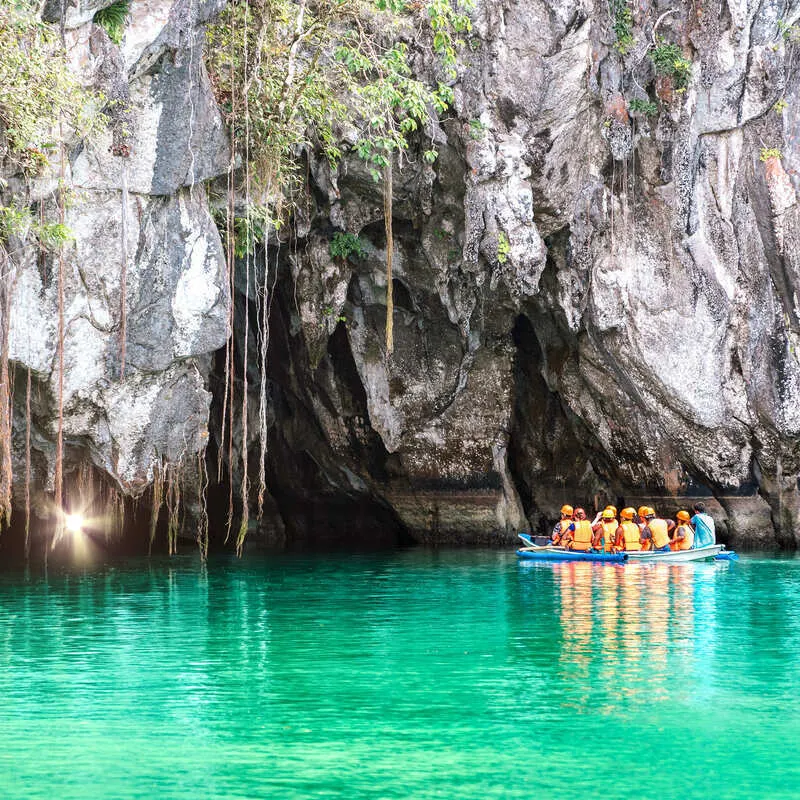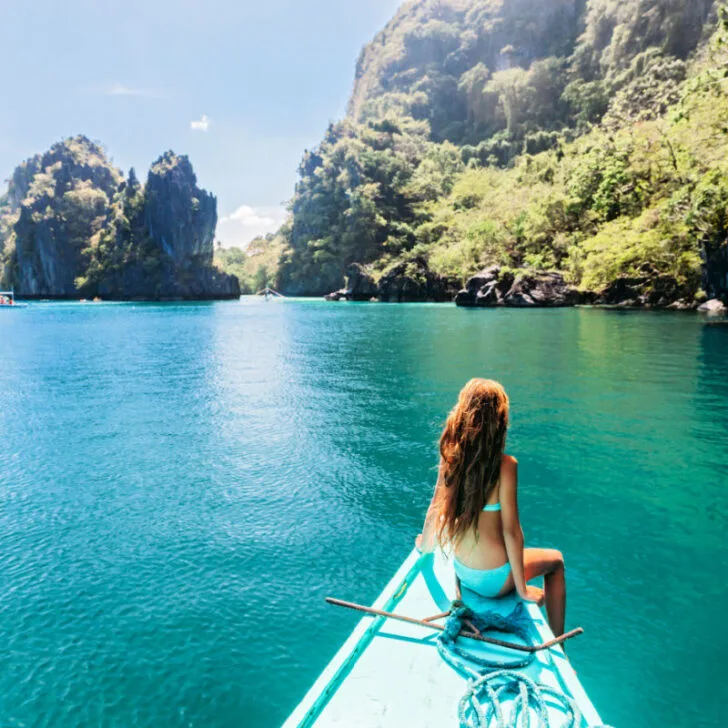The Philippines may not be the first country that comes to mind when travelers begin planning their epic Southeast Asia adventure, especially when there are far more popular destinations, such as Thailand and Malaysia, both of which outpace it in overall arrival figures by a wide margin.
Between 2020 and 2021, the Philippines ranked only sixth in the region, and though it still has a ways to go, it is quickly approaching the top five, having re-emerged as a strong competitor and recording over 3.3 million tourist arrivals this year so far.
The Philippines Make A Triumphant Comeback
This is particularly impressive, seeing that tourism in the Philippines came to a standstill for much of 2020, 2021, and even 2022, as it was one of the last Southeast Asian countries to lift health-related restrictions.
In celebrating the news, Tourism Secretary Christina Garcia Frasco has stated, ‘Philippine tourism is back and it’s back with a vengence‘, noting its ‘robust growth’ and the local industry’s fast recovery post-reopening.

Tourism is again considered the ‘second driver’ of economic development in the country, and through its impressive rebound, the Philippines has suddenly become one of the fastest-growing destinations in Southeast Asia.
You may be wondering why.
Just As Beautiful As Bali Or Thailand, But Fewer Tourists
Part of the reason why tourists flock to Southeast Asia for their yearly getaways is the amazing weather and topical atmosphere they normally find there, irrespective of season.

Thailand, Vietnam, and Indonesia are particularly famous for having unspoiled reserves and miles on miles of pristine beaches. Though it is often overlooked, the Philippines is just as equally stunning and naturally gifted as its main competitors and perhaps the subcontinent’s most beautiful offshore destination.
Comprising over 7,000 islands scattered across the South China Sea, the country has numerous paradisaical spots – perhaps too many to count – and a vast collection of unspoiled nature reserves.
One of the trendiest destinations in the Philippines, the archipelagic province of Palawan is dotted with white-sand beaches, lapped by teal-colored waters, verdant areas, unique geological formations, and traditional coastal settlements that are yet to suffer the brunt of over-development.

If it’s a livelier environment you’re after, the best resort island in the country, Boracay, is located in the central archipelago, jam-packed with beachfront luxury hotels and entertainment zones. Cebu is not to be missed, either.
Home to the vibrant Cebu City, the oldest city in the Philippines, some of Asia’s most beautiful jungle landscapes, and over a thousand waterfalls, including the milky-blue Kawasan Falls, it is a natural oasis awaiting discovery.
The Philippines Is Much More Affordable

Much like its Southeast Asian counterparts, the Philippines is an extremely affordable destination, where tourists benefit from excellent conversion rates due to the weakness of the local currency and the country’s overall low cost of living.
According to BudgetYourTrip, you should set aside $66 per day traveling to the Philippines, which is based on the expenses of other travelers. The platform states that, on average, tourists spend the equivalent of $16 on meals every day.
When it comes to hotels, the average price for an overnight at a double room for couples stands at $47 in touristy spots, bringing the total cost of a one-week vacation in the Philippines to $928. In Singapore, the most expensive country in Southeast Asia, a single week will set you back by a whopping $2,193.

With travelers now favoring budget-friendly destinations where their tourist dollars stretch further, it’s no surprise the Philippines is enjoying a new popularity peak.
Manila Is A Great Homebase For Digital Nomads
The Philippines is also staying on top of the latest travel trends, most notably digital nomadism. The country is set to discuss a new bill that would open more migration paths for remote workers looking to settle, even if temporarily, in the national territory, and it is likely to pass.
For now, the Philippines is yet to launch its own Digital Nomad Visa (DNV), but this hasn’t stopped it from becoming one of Asia’s trendiest nomad hotspots.

It is one of five destinations in the world where nomads can live on under $1000 per month, with Numbeo setting the monthly costs estimate for a single person at only $611.8.
Staying in Manila, the cosmopolitan, multicultural Filipino capital, where you will find a rich Spanish colonial heritage and much older native landmarks, the average grocery price stands at around $218 a month, while eating out will cost you a negligible $70 monthly when avoiding tourist traps.
The Philippines is a bargain, perhaps even more so than Thailand, Indonesia, and certainly the incredibly pricey Singapore.
No Visa Requirements

Southeast Asian countries are notorious for their stricter entry rules and tourist visas. When traveling to Vietnam, Americans must apply for an e-Visa in advance so as not to be barred from boarding their flight, a bureaucratic step that involves filling out a registration form, paying a $25 fee, and awaiting approval.
Similarly, when traveling to Bali, part of Indonesia, tourists must either obtain a pre-travel online visa (or e-VOA) or a Visa On Arrival landing at one of the authorized entry points. Though they are easy to obtain, reports of fake visa scams that can put you in big trouble have become more frequent.
The Philippines, on the other hand, has no visa requirements whatsoever applying to American citizens and most Westerners.

You can simply book your flight anytime you want, land in the country, and should you satisfy the most basic requirements, such as having an outbound or return ticket ahead, you’ll be granted an entry stamp allowing you to stay for 30 continuous days.
This may not be enough time to experience all that this vast archipelago has to offer, but the good news is, you can always come back, and rest assured you will.
Credit: Source link

